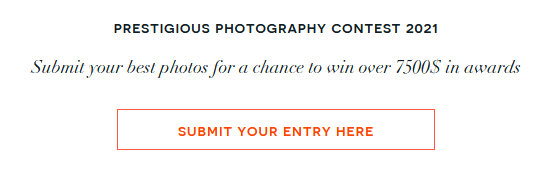As part of a new policy on promoting photo contests, Inside Imaging will now include an exploration of how a photo contest operates.

The photo contest sector is experiencing exponential growth. Every second story on the photography websites is either announcing or presenting the winners of some international contest or another. This proliferation is obviously answering a demand. Photographers win awards and prizes, gain exposure, showcase their work, sometimes even receive feedback, and earn credibility; the awards celebrate photography and photographers; photo media publishes a free gallery of images; brand sponsorship is good marketing; judges are paid; for-profit contest organisers make money; and prolabs and photo book manufacturers may potentially benefit by printing an end product. Everyone wins.
But the over-saturated international photo contest market is effectively unregulated, and the photo media rarely sinks its teeth into what’s happening behind the scenes. Specialist websites are hungry beasts, and photo contest pic spreads are tasty morsels.
On the dark side of the photo contest market there are a small batch of bad players, and a handful of entrepreneurs who lack transparency, exploiting a photographer’s desire to win awards. At the worst end of the scale is the photo contest empire built by Polish photographer, Martin Stavars, which motors on despite numerous accusations of being a dodgy cash-grab operation. The key to this success is a lack of transparency, preventing the organiser/s from being clearly identifiable and held accountable.
As we learned more about the photo contest scene after researching a series of articles, Inside Imaging has become increasingly discriminating about whether to publicise a photo contest. Although it’s not immediately apparent, most photo contest organisers are running a business – including the various Photographer of the Years.
We are now including a quick overview of how the contest operates, looking at transparency regarding who runs it, whether they can be contacted, whether there is a jury panel, and of course the terms and conditions – especially copyright issues and entry fees. If anything comes across as slightly off, we won’t give it a run. But if we think it’s a real real stinker, we will point that out.
Moving forward, as they say, Inside Imaging will publish a criteria covering these topics for each photo contest we cover. And if we come across a particularly dodgy contest, we will publish the criteria as a standalone article.
We hope that over time we build up a useful data source to enable readers to make informed decisions about the credibility of a photo contest, and help them recognise similar characteristics in other contests. Additionally, it may prompt contest organisers to be more open about their operations.
Here is the criteria:
Organising group and objective: Is the contest run by an individual, or a company or organisation?
Status: Is the photo contest a for-profit business, or a charity or not-for-profit entity?
Entry fees: The cost to enter.
Prizes: The prize pool.
Sponsors: Who is sponsoring the contest?
Judges: Who decides what wins?
Number of entrants/submissions: Competitions generally publish how many submissions are made. If a contest is claiming to be the ‘International [insert here] Photographer of the Year Awards’, but only receives 500 entries, can it really make that claim?
Categories: What are the contest categories and sub-categories. (One of the characteristics of the for-profit contests is a plethora of categories.)
Exposure: Will there be an exhibition, press publicity, a book, etc.
Affiliations: Does the organiser have involvement in other relevant contests or photo industry business/organisations?
Transparency: Is it easy to determine the above details? If not, why?
Communications: Is it easy to communicate with an organiser, PR firm, staff, etc?
Estimated Gross Revenue: The number of entries multiplied by the cost of entry.
Copyright standards: Will entrants retain copyright, or is the contest a rights-grab? This is a big one.
Overall rating: Based on all the above, is this a credible contest?





The Arts Law Centre of Australia run a very good review of competitions in the visual arts space and are always interested in hearing of competitions. They have a strong track record of getting things changed (if the organisers are willing to listen !! ) and the more thoughtful organisations can ask ArtsLaw to review T+C’s prior to publishing https://www.artslaw.com.au/prizes-and-competitions/#starratingsystem.